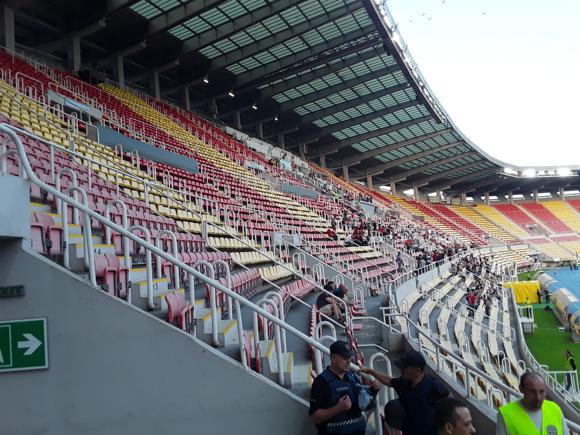Teams, tales and tips – a guide to the local game
Capital of Macedonia, Skopje is traditionally its seat of power as far as football is concerned. Home of the impressive national stadium, the Toše Proeski Arena where the 2017 UEFA Super Cup was played between Real Madrid and Manchester United, Skopje is where 20 of the 30 league crowns have gone since Macedonia gained independence from Yugoslavia in 1991.
But not in 2018. Ethnic Albanians Shkëndija won the league by 35 points (!), leaving Vardar and Rabotnički in their wake. These once dominant sides from the capital groundshare the national stadium where major European club fixtures are played.
Here Vardar famously beat Fenerbache in 2017 and Rabotnički overcame Trabzonspor in 2015. Shkëndija moved their glamour tie with Milan from their home in Tetovo to fill the Philip II Arena with 25,600 spectators in 2017. Even little FK Shkupi, officially formed in 2012 and only a top-flight team since 2015, switched from the Čair Stadium in north-east Skopje to the central, riverside national arena when staging the home leg of their Europa League tie with Rangers in July 2018.
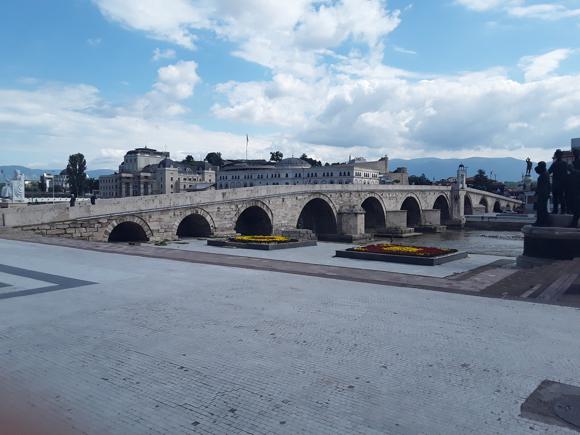
Also associated with ethnic Albanians, FK Shkupi have strong links with another venerable Macedonian club, Sloga Jugomagnat, which folded in 2012 after winning three consecutive league titles around the turn of the millennium.
Sloga were created in 1927, the same year that the Skopje FA was formed at the Neznani Junak restaurant. Previously tied to Belgrade, this local branch set up a city league, first won by Pobeda Skopje and three times by Gragjanski Skopje, Macedonian only representatives in the all-Yugoslav champions.
During the war, Gragjanski, Pobeda and previous Skopje title winners SSK were forcibly merged by the incoming Bulgarian authorities to compete in their league as FC Makedonija, runners-up to Levski Sofia in 1942.

With Skopje a regional capital of the newly formed Socialist Yugoslavia, Gragjanski amalgamated with Pobeda in 1947 to form Vardar. Rabotnički, meanwhile, were the classic railway workers’ club, who won five Macedonian titles in the 1950s. Despite Vardar’s Yugoslav Cup win of 1961, Macedonian champions generally made little impact once they gained access to the all-Yugoslav League.
The main rivalry for Skopje clubs was with FK Pelister of Bitola, also winners of five league crowns in the post-war period. Pelister have since sunk into mediocrity and the needle matches are now between clubs with ethnic Macedonian and Albanian followings.
In 1963, Skopje was hit by a terrible earthquake that destroyed 80% of the city. A benefit match was organised in Belgrade, Eusébio scoring four as the Rest of Europe beat Yugoslavia 7-2. Vardar swapped their red-and-white shirts for red-and-black.

As the city was gradually redesigned by the same Japanese architect who rebuilt Hiroshima, so teams from Štip and Tetovo took the upper hand.
Under Andon Dončevski, who played in the Yugoslav Cup-winning team of 1961, and with Skopje-born, later Red Star and Inter goalgetter Darko Pančev, Vardar won the Yugoslav League of 1986-87. Topping the table above Partizan Belgrade, who had had six points deducted, the Macedonians were then stripped of their title when the punishment was rescinded.
The decision came too late to stop Vardar competing in the subsequent European Cup, and defeat to Porto. A crowd of 17,500 gathered at the Gradski Stadion, today’s Toše Proeski Arena, to see the holders beat the home side 3-0. The game and title run-in saw the rise of Vardar ultras group Komiti, in the West (Zapad) Stand.

Though Red Star poached Pančev, Vardar walked the first three independent Macedonian championships after 1992 but did little in Europe until a decade later, and a win over CSKA Moscow. A narrow defeat to Sparta Prague prevented Vardar’s debut in the Champions League group stage.
At national level, Macedonia’s most impressive campaign to reach a major finals was their first in a World Cup, Skopje witnessing wins over Ireland and Iceland but no qualification for France 1998.
By the time Scotland’s supporters were here a decade later, the Gradski Stadion was being transformed into the Toše Proeski Arena, a five-year, €60-million development.
Four Skopje sides usually compete in the ten-team Macedonian First League, doughty FK Makedonija Gjorče Petrov bouncing between top and second flights in recent seasons. Their modest Stadion Gjorče Petrov stands in the far west of Skopje, near the river on Mice Kozar.
Getting Around
Arriving in town, local transport and timings
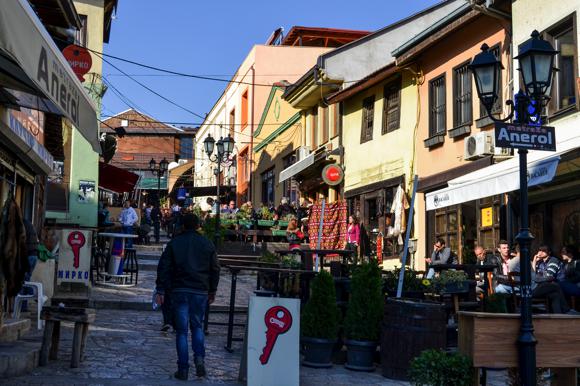
Alexander the Great airport is 22km (13 miles) east of the city, linked to town every 2-3hrs by the Airport Shuttle Service bus (190dn/£2.70) that calls at two malls, the main bus station and the Holiday Inn. An official, white-coloured airport taxi (+389 70 813 037) has an official rate of 1,220dn/£17.50. Other taxis may charge under 1,000dn/£14.30 – agree a rate first.
The bus and train stations are next to each other on the south bank of the river, east of the city centre. Public transport is a network of buses, for which you’ll need a plastic charge card, available at the airport and at kiosks. Each journey is 35dn/£0.50.
The city centre is walkable, as is the national stadium from most points downtown. Taxis are plentiful – an average journey across town should cost around 150dn/£2.15.
Where to Drink
The best pubs and bars for football fans

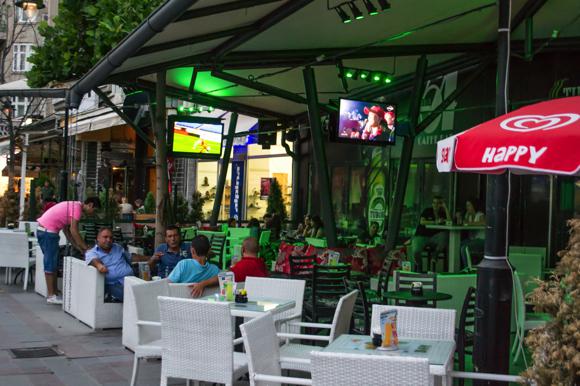

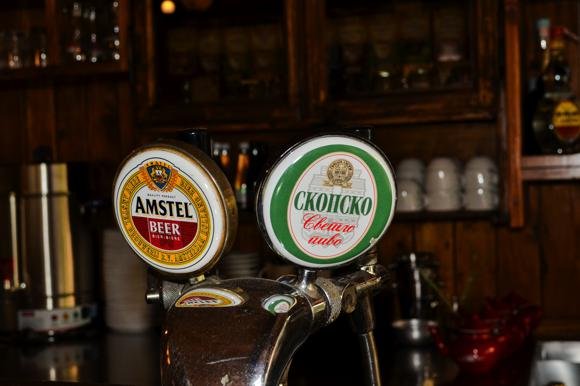
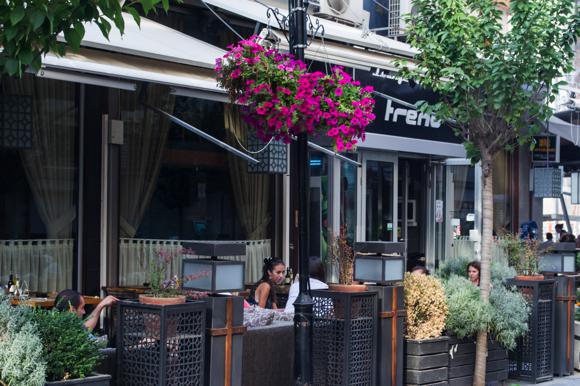


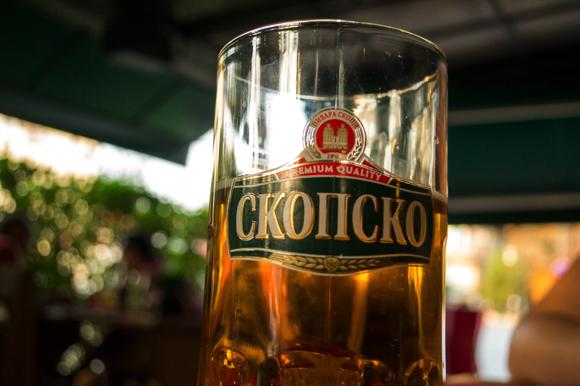

The leading local beer, Skopsko, is named after and brewed in the Macedonian capital. The main bar strips are along the river, the Kej 13 Noemvri embankment in front of the Gradski shopping centre, usually decked out in national flags for big matches; and along the focal street of Makedonija. Terrace cafés, some with TV football, stand shoulder to shoulder.
On 13 Noemvri, St Patrick’s Irish Pub offers Guinness and sturdy breakfasts and mains, as well as TV games and live music at weekends. Still downtown, where Dame Gruev meets Bulevar Partisanski Odredi, the Custom Pub is in similar vein, as was Pub London, until being overhauled and attached to the more fashionable Trend (Nikola Vapsarov 2-4), which becomes a nightclub after dark.
Best of the bunch is probably Piazza Liberta (Dimitrie Čupovski 24), named after the square here that didn’t survive the 1963 earthquake. Look out, too, for Pub Porta (Bulevar Partisanski Odredi 21), with its many beers and TV football.
Where to stay
The best hotels for the main stadium and city centre



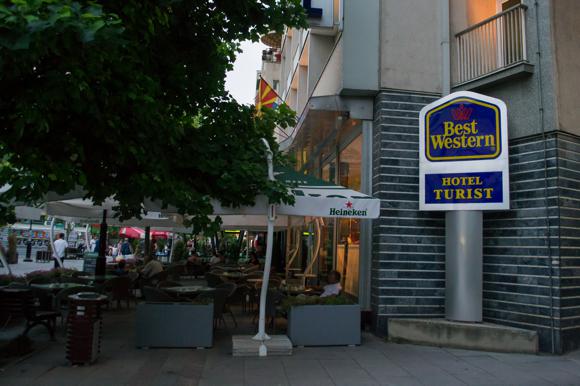
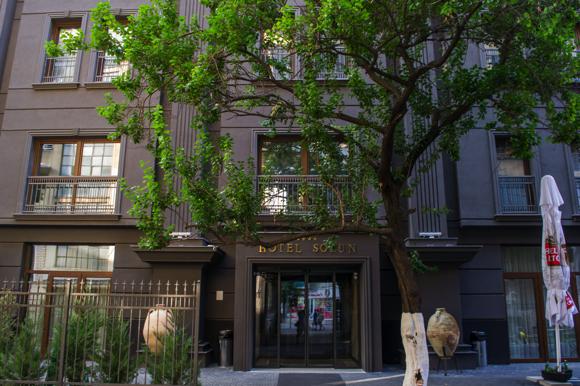

Visit Skopje has a hotel database.
Near the national stadium, the Hotel City Park is a reliable, 18-room four-star opened in 2010. Nearer still, the Tomce Sofka is more homely and has a restaurant attached.
On the stadium side of the city centre, near the main square, the Hotel Solun claims to be the first eco-hotel in the Balkans, while overlooking the square itself, the Hotel Pelister is a decent, mid-range choice with rooms of varying sizes and prices.
Nearby on the main street of Makedonija, reliable chain Best Western Hotel Turist sits opposite the Memorial House of Skopje-born Mother Teresa. Close to the river, and a string of cafés, stands the business-friendly Holiday Inn Skopje.
Just over the water from there, in the historic Turkish quarter, the Stone Bridge Hotel exudes Ottoman character.

